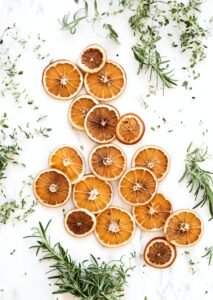Scripture: Genesis 39-41
Learning Objectives:
- Students will review the story of Joseph saving grain during the years of plenty to prepare for the years of famine.
- Students will learn that the basic methods of preserving foods for future use are drying, adding salt and adding sugar.
- Students will preserve and taste foods using the basic preservation methods.

Guiding Question: How can we choose, preserve, and store healthy foods to eat later?
Materials: Assortment of foods that are preserved by drying, adding sugar or adding salt (such as raisins, jellies, pickles, canned beans, kale chips, apple chips, potato chips, etc.) Optional: stove top and/or oven, pans, and pots for making chips and/or fruit preserves.
Procedure: Review that God had a special plan for Joseph. He used his gift of dream interpretation and organization skills to save many people from the famine. Review the smart thinking and God-given knowledge Joseph used to save food during the years of plenty so that the people would not starve during the famine. Today we can still save foods that we like to eat for many weeks later. Discuss how some foods are seasonal like berries in the summer or apples in the fall. If we want to eat them later, we need to preserve them.
Explain why some foods last longer than others. Foods that last longer are usually drier and/or have more salt and/or sugar. This is why canned fruits, craisins and jellies are often very sweet. Canned vegetables and chips are often very salty. Chips and crackers do not spoil very fast because the water is taken out of them and salt is added. Show students examples and let them taste them. Compare and contrast the preserved version to the fresh version. Examples: raisins vs. grapes, fresh berries vs. jam/jelly, baked potato vs. chip, fresh kale vs. chip, fresh green beans vs. canned green beans, baked meat vs. jerky.
You may also want to take the opportunity to explain that foods usually last longer at colder temperatures. That is why foods that spoil easily such as eggs and milk need to be refrigerated. This is also why foods last longer in the refrigerator.
Chose a recipe and preserve a food using one of the common methods. Here are examples:
Dry: Apple Chips- Slice apples and sprinkle with cinnamon. Bake apple chips in oven at 200 degrees Fahrenheit for minutes.
Note: As a teacher slices, students may arrange them on the pan, sprinkle them with cinnamon, set the oven temperature, and set a timer. The teacher may want to have some pre-made for students to eat after they have helped make a new batch since they take so long to cook.
Sugar: Jam/ Jelly- There are many blogs and recipes for jelly. Chose according to what is in season or common in your area. Here is an example of a strawberry jam recipe from a blogger. Note: Students can measure and pour ingredients and stir, but be careful around the stovetop. Have some pre-made jam and crackers for tasting.
Drying/salting: Kale chips- Brush kale with olive oil, sprinkle with salt, and bake at 300 degrees Fahrenheit for about 30 minutes. There are many variations available online.
Fun fact: Honey is the only food that never spoils! The only reason that it has an expiration date in grocery stores is because that is when the plastic starts to break down and makes it less healthy.
Additional Questions:
- What foods grow in our area that would be good for preserving? What would be the best method of preserving them?
- In what situations would it be good to have preserved food? (examples: electricity outage, hiking/camping, produce’s off-seasons, crop failure, etc.)
- What are some causes for famines? (insects, fungus, extreme temperatures, etc.)
Supplemental Activities:
- More advanced students can research foods commonly grown in their geographic area and research or create a recipe for the best way to preserve it. Host a taste-testing festival for students to sample each other’s creations.
- Show students an array of foods or pictures of foods. Students race to put them in order based on when they think they will spoil. They can then check their work with a teacher.
- Show students an array of foods and have them sort which ones are preserved with sugar, salt, or drying.
- More advanced students can research causes for famines in history and ways that the culture tried to resolve the problems. How did it affect their economy and lifestyle?
Written by: Savannah Negas
